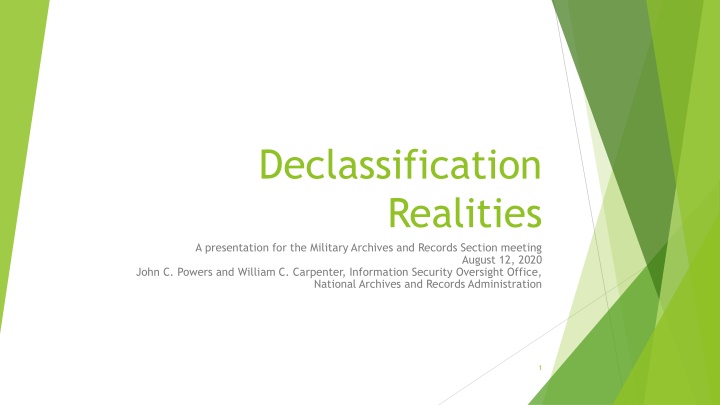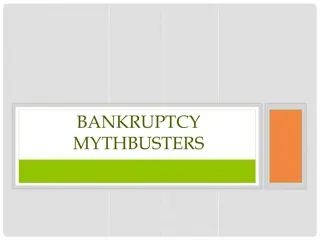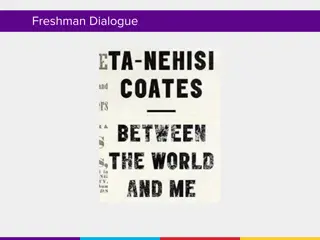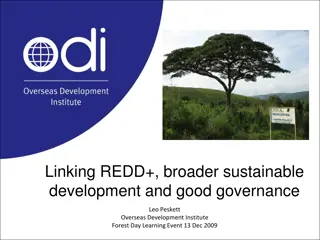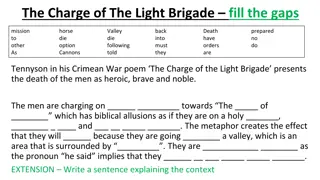Declassification Realities: Understanding the Importance and Process
The complexities of declassification through insights on what it entails, where it occurs, how it functions, and why it holds significance. Gain an in-depth understanding from experts in the field, John C. Powers and William C. Carpenter, as they shed light on the intricacies of declassification practices within military archives and records.
Download Presentation

Please find below an Image/Link to download the presentation.
The content on the website is provided AS IS for your information and personal use only. It may not be sold, licensed, or shared on other websites without obtaining consent from the author.If you encounter any issues during the download, it is possible that the publisher has removed the file from their server.
You are allowed to download the files provided on this website for personal or commercial use, subject to the condition that they are used lawfully. All files are the property of their respective owners.
The content on the website is provided AS IS for your information and personal use only. It may not be sold, licensed, or shared on other websites without obtaining consent from the author.
E N D
Presentation Transcript
Declassification Realities A presentation for the Military Archives and Records Section meeting August 12, 2020 John C. Powers and William C. Carpenter, Information Security Oversight Office, National Archives and Records Administration 1
Overview: What, Where, How, Why What declassification is I. Where declassification happens II. III. How declassification actually works IV. Why declassification is so important 2
Who are these people, and why should I listen to them? Bill Carpenter: John Powers: 1995-1999: U.S. Army s Gulf War Declassification Project; Army Declassification Activity 1991-1995: Nixon Presidential Materials Project; Reference Archivist and Nixon Tapes Archivist 1999-2001: Joint Personnel Recovery Agency: operational prisoner of war/escape and evasion records 1995-1996: Lyndon B. Johnson Presidential Library; LBJ Tapes Archivist; Foreign Relations of the U.S. (FRUS) Archivist 2001-2007: Declassification archivist at NARA: Korean War; Joint Staff records 1997-2007: Nixon Presidential Materials Project; Subject Matter Expert, Supervisory Archivist, Deputy Director 2007-2020: Information Security Oversight Office analyst: Interagency Security Classification Appeals Panel; declassification program assessments; classified outside Government control assistance 2007-2015: ISOO; Interagency Security Classification Appeals Panel, Declassification program assessments, Public Interest Declassification Board 2019-2020: Acting Director for Access, National Security Council 2015-2018: National Security Council: Director for Access 2018-2020: ISOO: Associate Director for Classification Management 3
I: What Declassification is (and is not) Declassification is: The process by which information is determined to no longer need the protections required for Confidential, Secret, and Top Secret information Governed by Executive Order 13526, Classified National Security Information An art, not a science Declassification is not: The release to the public of information Truly automatic [yet] 4
II: Where Declassification Happens In Agencies: Original Classification Authorities (OCAs) in program offices Mandatory Declassification Review (MDR) programs Freedom of Information Act (FOIA) programs Discretionary release initiatives Automatic review programs: 25-year-old (and older) records At the National Archives and Records Administration (NARA) National Declassification Center Accessioned Federal Records Presidential Materials and Records 5
III: How Declassification Happens: MDR Mandatory Declassification Review Established under section 3.5 of E.O. 13526 Mandatory means mandatory: all classified information (minus some restrictions) can be requested Requests must be targeted and precise: no fishing or broad requests Anybody can request: US citizens, non-US citizens (for non-Intelligence Community records), other Government officials Denials can be appealed, ultimately to the Interagency Security Classification Appeals Panel Classified Outside of Government: If you are not a U.S. Government repository and encounter classified materials, contact ISOO@nara.gov 6
III: How Declassification Happens: MDR, Cont d Every Agency must have an MDR process: See DoD Manual 5230.30: https://www.esd.whs.mil/Portals/54/Documents/DD/issuances/dodm/523030m.pd f Reviews involve: Identifying other agency equity and sending referrals out to those agencies** Coordinating with agency program offices for current classification guidance Understanding your agency s ability to keep information classified beyond 25 years Identifying information not subject to release due to non-national security reasons: Personal privacy Valid statute: International Traffic in Arms Regulations; CIA names; NSA organization, for example ** If required 7
III: How Declassification Happens: Automatic Declassification In 1995, President Clinton s E.O. 12958 said: All permanent classified records of the U.S. Government will be automatically declassified when they reach 25 years old Agencies may exempt certain records from automatic declassification Intelligence sources and methods, technology, war plans, foreign relations, etc. Interagency Security Classification Appeals Panel must approve the exemptions Agencies started massive review programs for NARA records and records in Federal Records Centers: tabbing documents for exemption and referral In 2009, President Obama updated and signed E.O. 13526 Established 25, 50, and 75-year automatic declassification requirements Established the National Declassification Center at NARA to process accessioned records for public access 8
III: How Declassification Happens: Special Projects Section 3.1(d) of E.O. 13526 recognizes that sometimes the public interest in the disclosure of information can outweigh the need for secrecy U.S. Declassification Project for Argentina: U.S. records concerning Argentina s Dirty War of the 1970s and 1980s. Strengthens foreign relations Enables accountability and reconciliation Dispels rumors and conspiracies President s Daily Brief Kennedy, Johnson, Nixon, and Ford Glomar Explorer/Project Azorian Intelligence successes and Cold War Understanding Legal Requirements Foreign Relations of the United States series by the Department of State Presidential action: Ukraine transcript 9 https://www.whitehouse.gov/wp-content/uploads/2019/09/Unclassified09.2019.pdf
IV: Why should we care? Access to the records of the U.S. Government enables American democracy Recognition that U.S. Government records belong to the People Permits citizens to actively participate in evaluating actions of their Government Hold Government accountable Denial of access to records is a characteristic of authoritarian governments The experience of the French Revolution Russia in the post-Soviet years Consider the British: Phased declassification of most government records National Archives only handles declassified records Intelligence records are excluded from declassification 10
Contact Information Information Security Oversight Office: https://www.archives.gov/isoo Bill Carpenter: William.Carpenter@nara.gov John Powers: John.Powers@nara.gov ISOO@nara.gov 11
